5 Steering and Suspension Checks for your Classic Car
Steering and suspension are both essential systems in your classic car. Direction changes are a necessity of any journey and your suspension ensures you get there without being shaken to pieces. We're going to look at 5 key components that make up the steering and suspension system, and how to ensure they are working at their best to keep you driving safely with a smile on your face. This article will cover standard suspension components. Stay tuned for a guide to steering and suspension modifications which will follow soon.
1. Get to grips with your tires
Tires are a good place to start. I know they’re not steering or suspension exactly (although the air cushion certainly offers additional comfort) but they connect the car to the road. Likewise, they are connected to the car by the suspension and pointed in the direction you want to go by the steering. For those on a shoestring budget, pop to your local 24hr garage and check your pressures with their machine, it could be $1 well spent. Under-inflated tires will kill your fuel economy and wear down the tread much quicker. While you’re there, check the tread depth with your fingertip and the overall condition of the rubber; a new tire (always best to replace in pairs) is cheaper than a blow-out, or 3 points and a fine, plus your car will be much nicer to drive too.
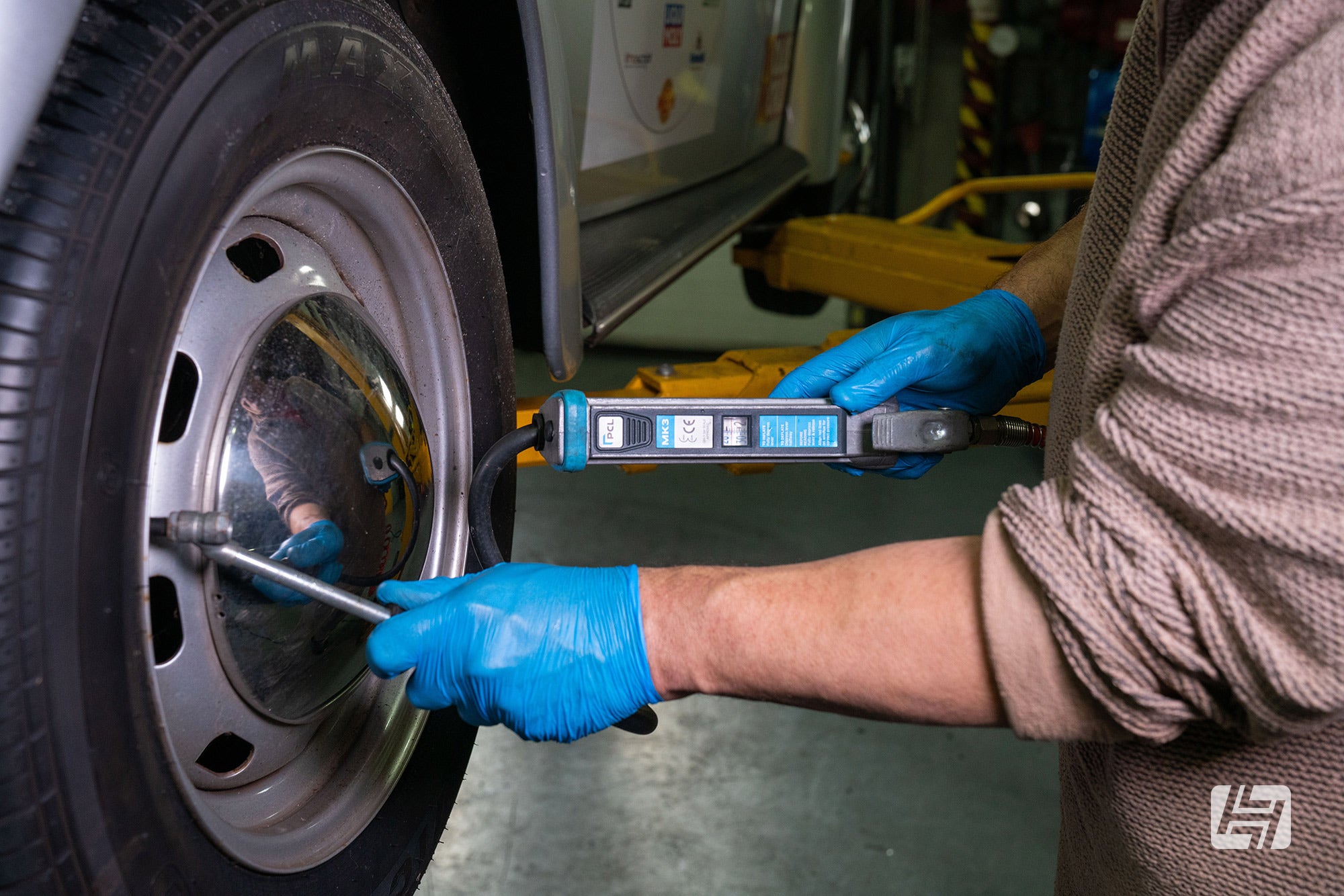
2. Bush Craft
Connecting all major components to each other (and to the body) will be rubber bushes. One of the downsides of being into old cars is that everything is old! Of course, that’s not a problem if you know where to get new steering and suspension bushes from. Renewing your rubber bushes, or even upgrading them can make things quieter inside and feel a lot more predictable under pressure. Corners will no longer try and kill you, knocking noises should be reduced and you might not be shaken to pieces with every stone in the road! A visual inspection would be a good place to start, look for cracking in the rubber and evidence of metal rubbing on metal. Rocking the car side to side and test-driving with extreme steering each way will also highlight rogue rubbers, giving you a good idea on where to concentrate your efforts.

Trouble up top?
Suspension bushes aren't just found underneath your classic car. Suspension top mounts, especially at the front are a vital component in the steering and suspension system and are a wise purchase if you are removing the suspension at any time. In modern vehicles, they offer a position for front suspension legs to twist from when the steering wheel is turned, and also ensure the shock absorbers stay underneath the wheel arches rather than poking right up into them! Worn suspension top mounts can be diagnosed by a knocking noise when you push the car up and down, and also by a heaviness to the steering. Of course, check your tire pressures are correct and do make allowances for older cars not having PAS when it comes to additional efforts when parking and tackling slow corners.
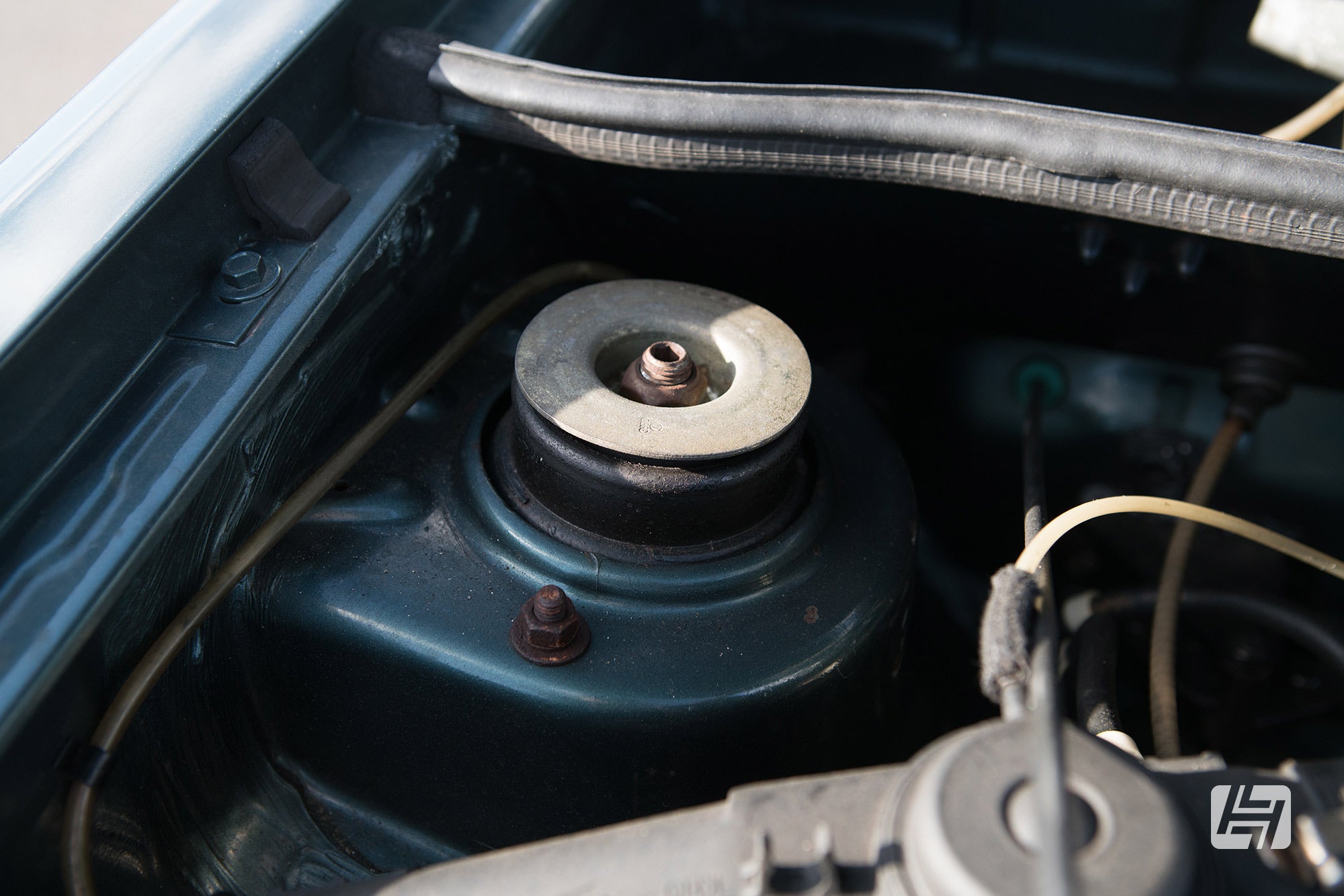
3. Bouncy Bouncy
The suspension system of most vehicles is made up of two parts. Some kind of spring and a shock absorber. To keep things simple we'll discuss them under separate headings. The spring part of an aircooled Porsche or VW suspension set-up is a torsion bar. This is a series of metal bars (called torsion leaves) that are fixed in at least one point which can twist at the other end. They can be seen in the end of the torsion arms in the photograph below. As the vehicle rides a bump this horizontal twisting is comparable to the compression of a traditional coil spring and it softens the impact felt by those travelling inside.
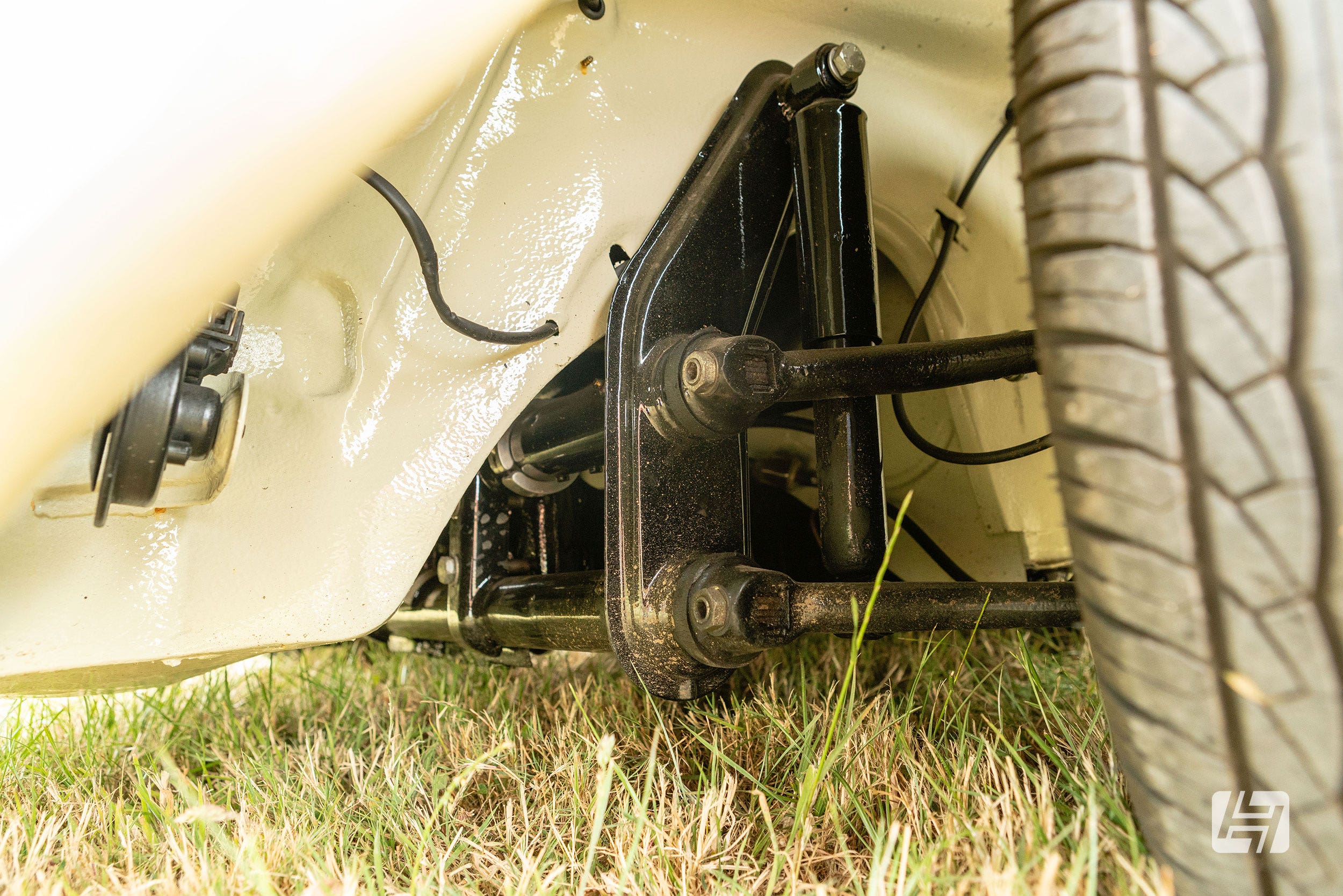
Perhaps a more familiar type of standard suspension is a coil spring either mounted around a shock absorber or alongside it. As the vehicle goes over a bump the spring compresses and then extends again to reduce the impact on the driver and passengers. Whilst your classic VW or Porsche will ride along held up by its springs (be it coils or torsion leaves) it’ll be bouncy at best, not to mention dangerous and that is why we have shock absorbers fitted too.
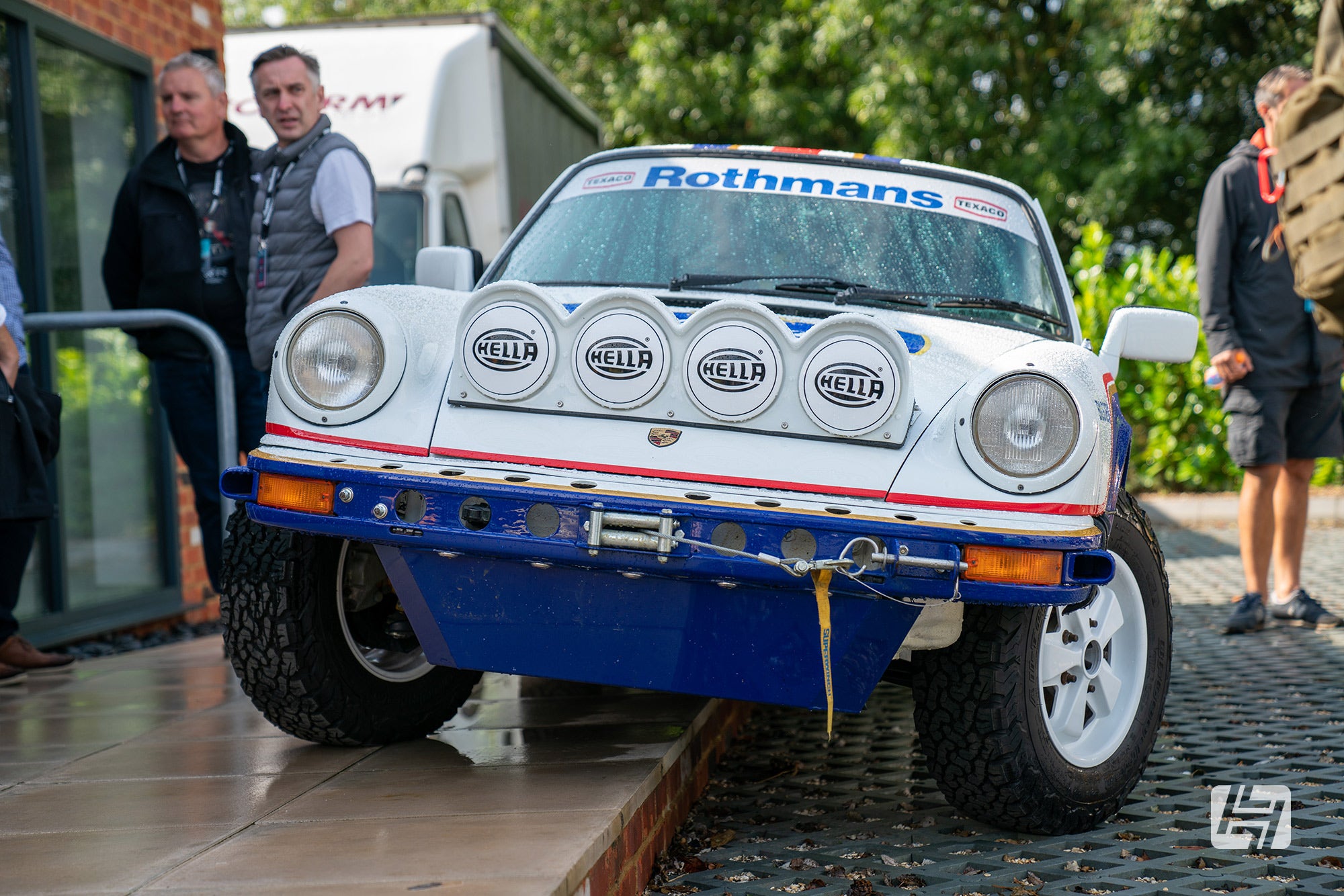
4. Shock tactics
Shock absorbers (or often called suspension dampers) are put in place to stiffen things up and help transition bumps with the least disruption to you and your fellow passengers. Without a shock absorber, your suspension will continue to bounce up and down, much like a rubber ball dropped from a height until slowly it settles on the floor. The shock absorber adds a friction element to that up and down movement (either using oil or gas struts) and brings the ball to the floor (ie. the up and down movement of the vehicle) in a much more timely fashion. You may have seen people pushing down on each corner of a car when they go to buy it? They are testing to see if the shocks are functioning correctly. Ideally, the car will bounce once, followed by a smaller movement and then settle. If the shocks are worn out, then the car will continue to bounce and it'll be like driving with a pogo stick in each corner if the vehicle is lowered it might not bounce at all! Shock absorbers will stop being effective if the pressurised oil or gas from inside has leaked out. The most likely source of this is the seal around the piston. This seal could have perished with age, or become damaged from imperfections on the piston. Sharp edges such as rust speckles, or marks made by holding it with mole grips are just the kind to damage the seal and compromise the shock absorbers efficiency.
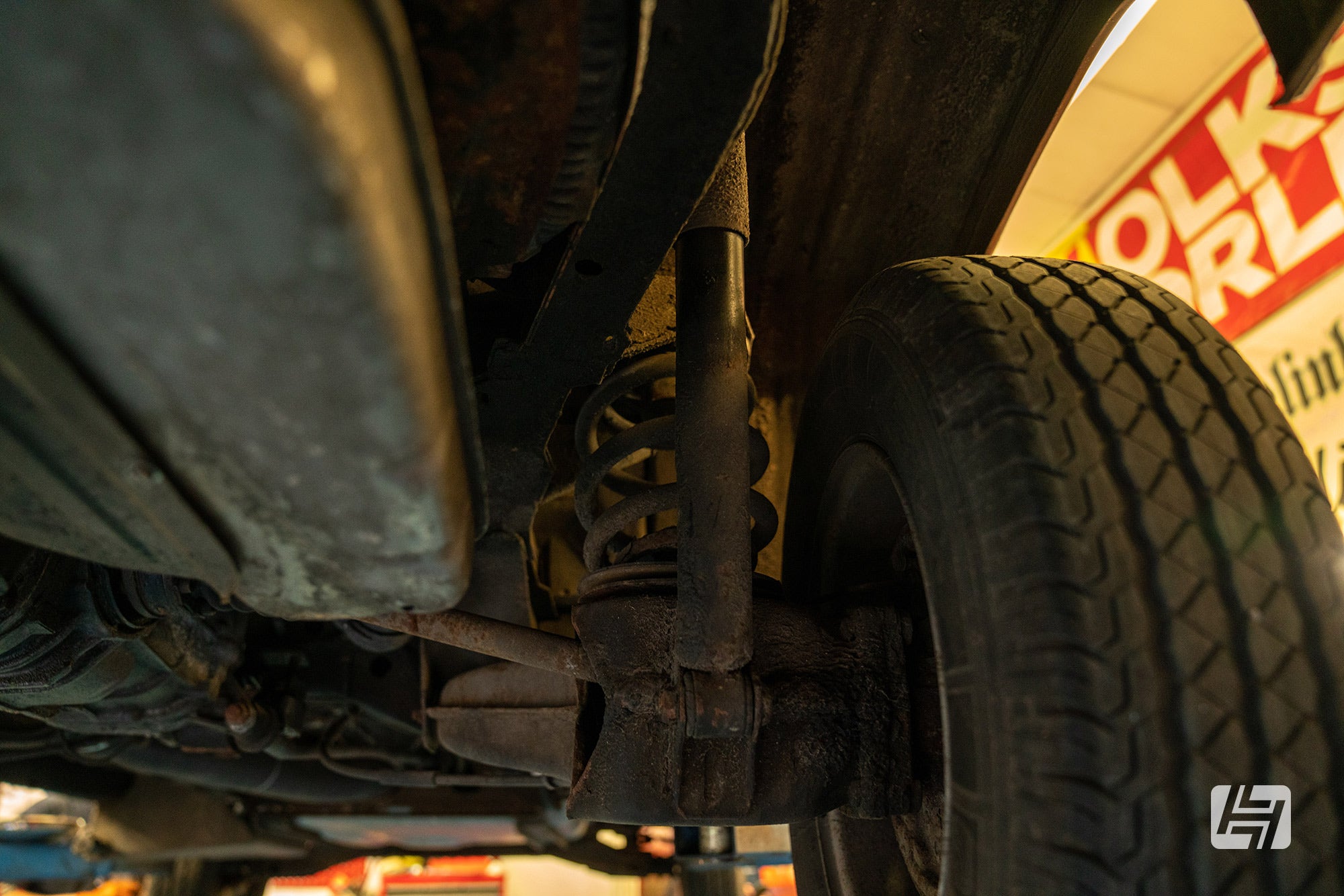
5. Behind the wheel
We somehow accept vague steering as part of our older cars character, but there’s a fine line between funny and fatal. Your car might be getting a green light each year for its MOT (hopefully you still get your car professionally checked regardless of its age) but it’s never too early to replace a ball joint or adjust tracking or a steering box. If you drive an old Beetle or Bus you'll be pleased to know that steering boxes can be adjusted (to a point) providing a more positive response to you turning the wheel inside. A glance through your workshop manual will explain the process in more detail. Does your vehicle pull to one side (check this safely and slowly) when you drive along straight and let go of the steering wheel? This is an easy indicator that your tracking is out. What does that mean? Let me explain... On the inside of both of your front wheels, you will have a hub on which your brakes are attached and your wheels are bolted onto. The hub has a rod attached to the inside of it, which is called the track rod (or sometimes tie rod, if not adjustable). There is one per side and these are joined together at the base of the steering wheel, on either end of a steering rack or steering box. In a perfect world when everything is connected and your steering wheel is straight, your wheels will sit straight. In reality, given component and chassis tolerances one or both wheels will point slightly out of line, either inwards or outwards. The art of tracking a car is done by adjusting the threads on your track rod ends to pull the wheels in, or push them out, to get them sitting correctly once again. These days most enthusiasts will employ a friendly (and careful) fast-fit garage to take care of this with laser alignment for about $70. It’ll give you peace of mind and save on uneven tyre wear too. Ideally, you should get your tracking checked if any steering or suspension components have been changed.
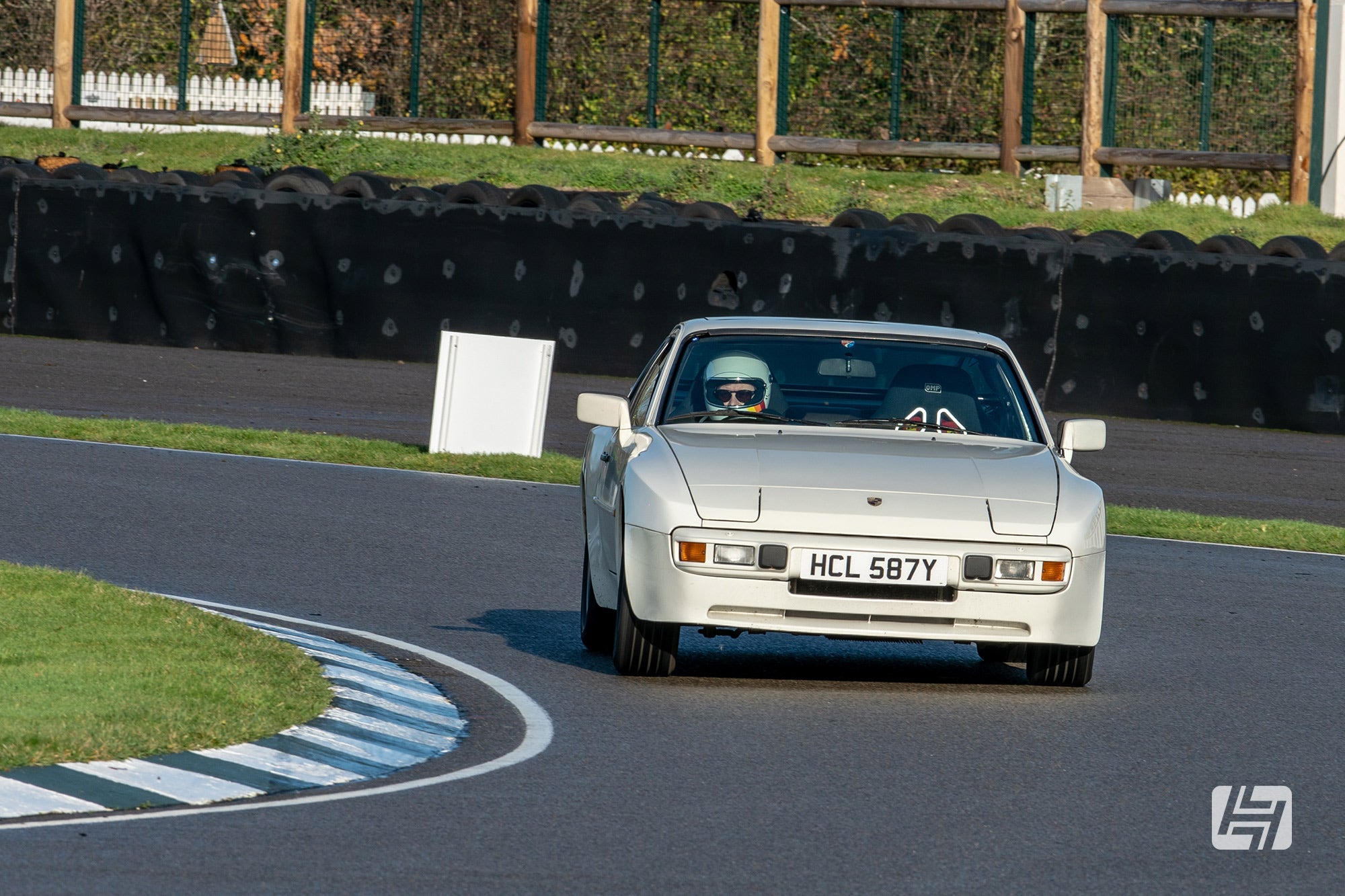
Hopefully, you have found this guide useful and will now be able to examine your vehicle's steering and suspension with additional confidence. Whilst no substitute for a mechanic sat behind the wheel, our team of enthusiasts will be able to guide you, should you need it, when it comes to finding the right steering parts or suspension components for your classic VW or Porsche.
Andy




 Bug
Bug
 Karmann Ghia
Karmann Ghia
 Bay Bus
Bay Bus
 Vanagon
Vanagon
 Eurovan
Eurovan
 Transporter T5
Transporter T5
 Rabbit Mk1
Rabbit Mk1
 Golf Mk2
Golf Mk2


 911
911
 996
996
 997
997
 986 Boxster
986 Boxster
 987 Boxster
987 Boxster
 912
912
 944
944
 924
924






